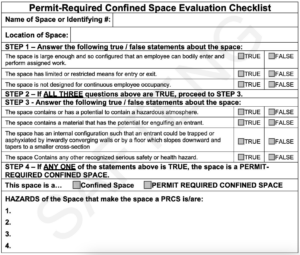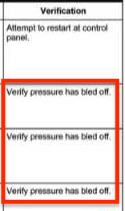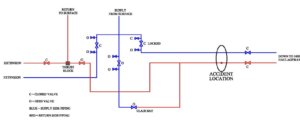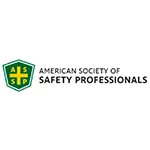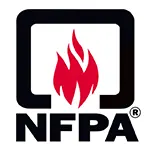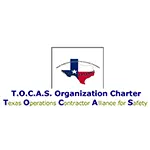CLICK HERE to Renew your Membership
CLICK HERE for a NEW Membership
CLICK HERE to see eligibility requirements for FREE Membership
If you have any questions, please contact me
We offer:
- Over 17,600 categorized unsafe acts/conditions and accident/injury photos
- Over 1,450 ppt's & doc's
- Over 3,975 technical articles on Process Safety & Occupational Safety & Health matters
- Over 450 videos

I am proud to announce that have extended our”Partners in Safety” agreement for another year (2025).
CI Members, send me an e-mail to request your FREE SAFTENG membership.





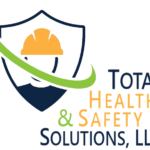





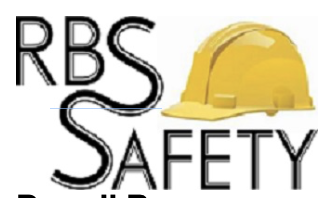


September 9, 2023
I hate this meme! This is an employee taking a shortcut and reflects the culture. But in almost every depiction of this photo, the intent is that the employee(s) know best, and we need to suit their wishes. Such garbage. If we have the employees involved in writing the SOP(s) and we train them well in those SOPs and this is the result – their decision-making is the problem, NOT the engineering/design....
Read More
September 9, 2023
I have written over 180 articles on the topic of Permit-Required Confined Spaces. We can agree there is a lot to write and talk about on this topic. In our travels, we do a lot of work with clients around their PRCS management; most of the time, this work is more “technical.” In this article, I want to explain how we should manage our PRCS Entry programs as a mini “safety management...
Read More
September 8, 2023
Scenario: The client invites the manufacturer of a piece of equipment that we evaluated and determined the space to be a PRCS. The client used the popular argument of “no one else treats these as a PRCS.” And the manufacturer rep explains how this latest model is made specifically for entry. So, therefore, in their eyes, their equipment is not a PRCS. This equipment is a small...
Read More
September 7, 2023
Last month, I wrote Before we can achieve a ZES, we must first define and quantify what precisely a form of “hazardous energy” is, and this week, I posted the MSHA accident investigation report where water in an abandoned chilled water system 1600′ underground was opened and the water, pressurized by the head pressure alone, was enough to knock a miner out of the aerial lift causing...
Read More
September 6, 2023
I can remember our first attempt at writing SOPs for our PSM covered process(s): Deviation is “High Pressure” in V-1 Steps to Correct “High Pressure”: 1) Lower Pressure Sound familiar? We chuckle now, but in the early 1990’s we thought this was the intent. We still find this kind of PSM/RMP SOP in 2023; however, most businesses have matured beyond this silliness. ...
Read More
September 6, 2023
From MSHA accident file… The two (10) ten-inch metal pipes being removed were part of a closed-loop chiller system that had been abandoned. One pipe supplied chilled water underground (supply and shown as blue in the drawing), and the other returned water to the surface (return and shown as red in the drawing). The chiller...
Read More
September 6, 2023
This is one of the best summaries of what we can expect to see in the 2024 IFC regarding Lithium Ion Batteries. CLICK HERE (Source: Fire Inspectors Association of Indiana )
Read More
September 6, 2023
This is why I question society’s ability to manage Oxygen deficient atmospheres in warehouses as a means of fire protection. At 10:00 a.m. on February 7, 2023, an employee was found unresponsive in the Control Atmospheric (CA) room. The typical oxygen level when the room is active is between 1.2% to 1.6%. The room has a main door and a smaller man-door; the man-door was open and the employee...
Read More
September 6, 2023
At 5:00 p.m. on January 30, 2023, two employees, 24 and 48, were performing operations pertaining to an autoclave. The atmosphere was oxygen deficient due to the presence of argon gas. The employees were asphyxiated and killed.
Source: https://www.osha.gov/ords/imis/accidentsearch.accident_detail?id=153529.015
Read More
September 6, 2023
At 6:45 a.m. on February 18, 2023, an employee, 31, was removing trays from a hydrogen reactor. The employee was on SUPPLIED BREATHING AIR. The employee attempted to exit the confined space at the end of the shift when he reported to the attendant that he could not breathe. The attendant told the employee to turn on his emergency escape bottle. The employee then reported that he was on the bottle....
Read More
September 6, 2023
At 12:30 p.m. on January 31, 2023, Employee #1, 45, performed cathodic protection maintenance on a 4-inch natural gas pipeline. Employee #1 removed the resin coating off the external portion of the pipeline to test the hull thickness of the pipeline. While removing the coating, the pipeline exploded. Employee #1 was killed by immolation. Employee #2 and Employee #3 were injured from the heat, blast,...
Read More
September 6, 2023
At 11:45 a.m. on February 23, 2023, an employee, 20, working for a city water department, was repairing a leaking 12-inch PVC waterline main valve. The valve was located in a utility vault approximately 5 feet deep. The employee turned off the water to the WEST of the valve by opening multiple fire hydrants. He and a coworker closed the valve, stopping the water from flowing from the west. The employee(s)...
Read More


